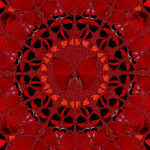Damien Hirst
H10-1 Wu Zetian - physical work., 2022
Materials: Laminated Giclée print on aluminium composite, screen printed with glitter.
Artwork dimensions: 100 x 100 cm
Additional details: Signed and numbered on the label.
Artwork dimensions: 100 x 100 cm
Additional details: Signed and numbered on the label.
100 x 100 cm
39 3/8 x 39 3/8 in
39 3/8 x 39 3/8 in
Copyright The Artist
Further images
-
(View a larger image of thumbnail 1
)

-
(View a larger image of thumbnail 2
)

-
(View a larger image of thumbnail 3
)

-
(View a larger image of thumbnail 4
)

-
(View a larger image of thumbnail 5
)

-
(View a larger image of thumbnail 6
)

-
(View a larger image of thumbnail 7
)

-
(View a larger image of thumbnail 8
)

-
(View a larger image of thumbnail 9
)

Overflowing with imagery and with a hexagonal creation at its middle, Wu Zetian is named for the effective Chinese ruler. In 655 CE Wu Zetian (624-705 CE) wedded Emperor Gaozong...
Overflowing with imagery and with a hexagonal creation at its middle, Wu Zetian is named for the effective Chinese ruler. In 655 CE Wu Zetian (624-705 CE) wedded Emperor Gaozong and progressively started to include herself in political undertakings, doubtlessly arousing a lot of consternation for some legislators. Utilizing her remarkable knowledge, Wu Zetian made soundness in the realm and united the Tang Dynasty when it had all the earmarks of being disintegrating.
At the focal point of Wu Zetian is a solitary pair of butterfly wings, which is encircled by a concentric circle of matched wings. This course of action blooms into a dynamic and even hexagonal development which has a plan of three sets of wings inside each point. This dependence on the number six to set up the organization reviews its return across Chinese maxims to signify kindness, introducing six as a fortunate number. The number acquires extra importance as it connects with the hexagon, which in China brings out the six headings (North, South, East, West, Heaven and Earth) and consequently addresses fulfillment, agreement and equilibrium. These affiliations likewise review the account of Wu Zetian whose knowledge, mental fortitude and definitiveness carried dependability to her domain.
Flawlessly laid out with splendid red wings, the four corners of the image plane are loaded up with additional courses of action of single or combined wings. The astute advances between compositional constructions in Wu Zetian loans a dazzling intricacy to the work that leaves it clearly steadily changing, bestowing into the work a feeling of development. Viably, the piece injects the print with the impression that the butterflies are without a doubt alive and are surging out into the space of the watcher.
At the focal point of Wu Zetian is a solitary pair of butterfly wings, which is encircled by a concentric circle of matched wings. This course of action blooms into a dynamic and even hexagonal development which has a plan of three sets of wings inside each point. This dependence on the number six to set up the organization reviews its return across Chinese maxims to signify kindness, introducing six as a fortunate number. The number acquires extra importance as it connects with the hexagon, which in China brings out the six headings (North, South, East, West, Heaven and Earth) and consequently addresses fulfillment, agreement and equilibrium. These affiliations likewise review the account of Wu Zetian whose knowledge, mental fortitude and definitiveness carried dependability to her domain.
Flawlessly laid out with splendid red wings, the four corners of the image plane are loaded up with additional courses of action of single or combined wings. The astute advances between compositional constructions in Wu Zetian loans a dazzling intricacy to the work that leaves it clearly steadily changing, bestowing into the work a feeling of development. Viably, the piece injects the print with the impression that the butterflies are without a doubt alive and are surging out into the space of the watcher.










